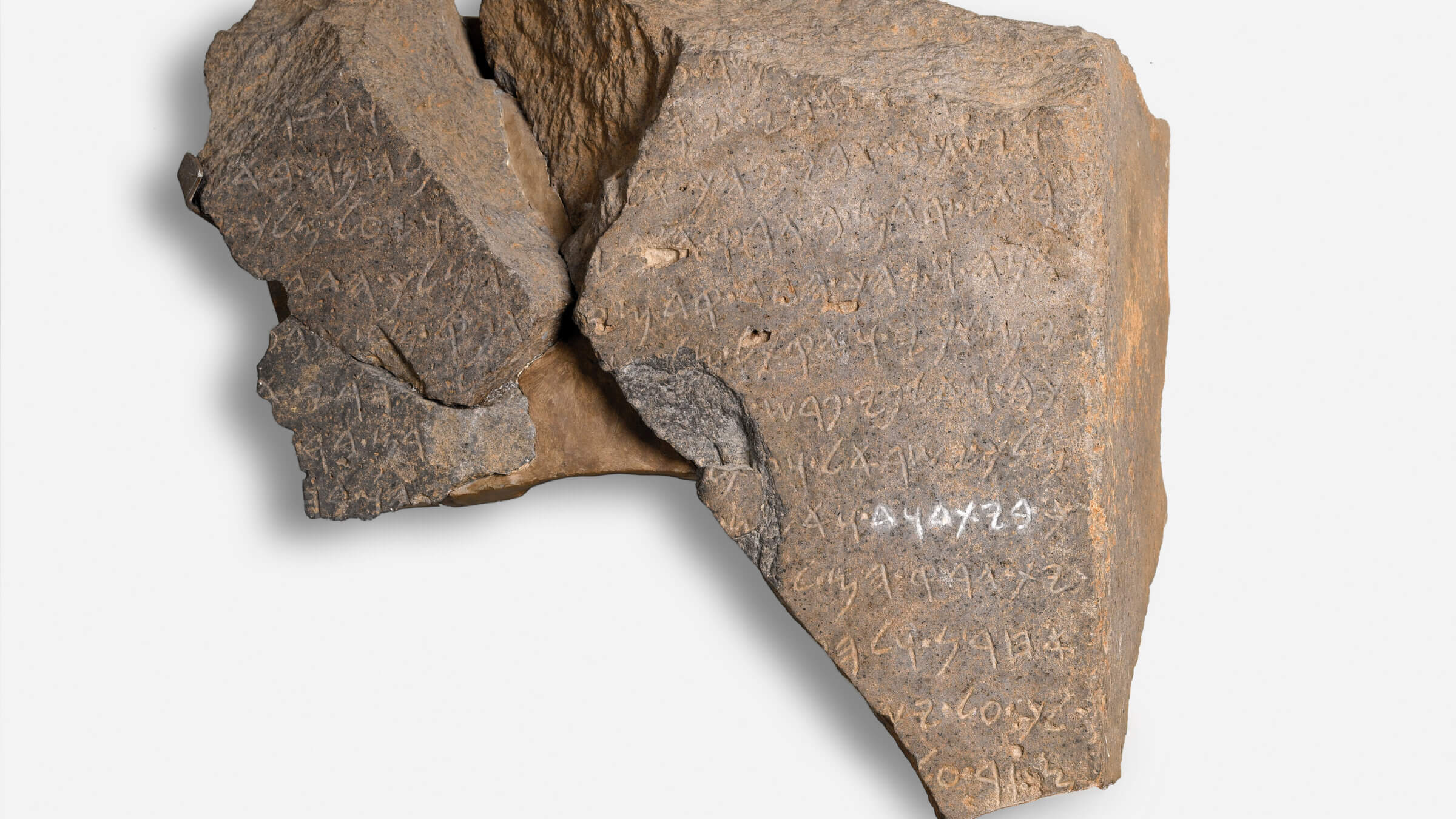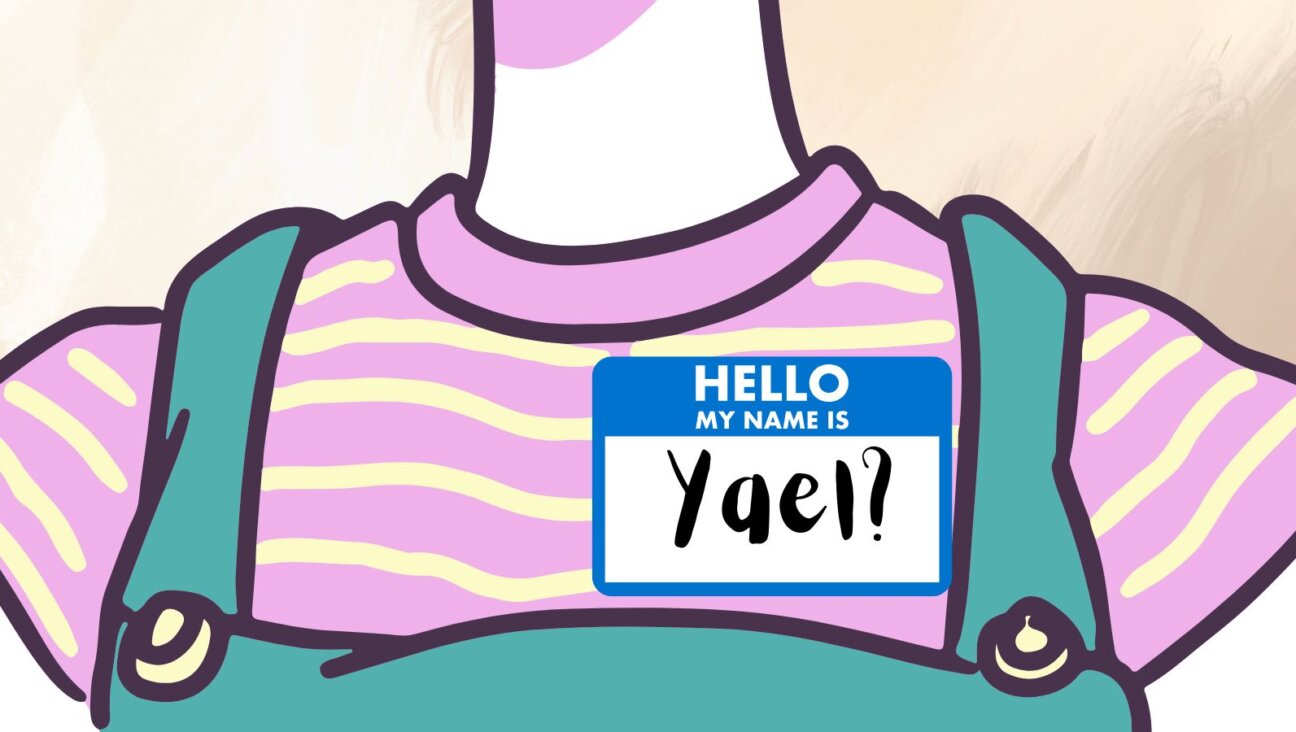This ancient archeological marvel celebrates the defeat of King David — does it prove he existed?
The Tel Dan stele, currently on display at the Jewish Museum, is the oldest non-biblical mention of the House of David.

“House of David” inscribed on Tel Dan victory stele. Collection the Israel Antiquities Authority. Photo by The Israel Museum/Meidad Suchowolski
What was once a larger, more imposing monument is now just three stone fragments held together by a metal stand. However, that does not make the Tel Dan stele, the oldest archeological mention of King David, any less impressive.
The stele – which is the archeological term for an upright monument demarcating a significant person, place or event – was used by an Aramaic King to boast about defeating King Jehoram of Israel and “Ahaziahu son of Jehoram, king of the House of David.” It is dated to 900 BCE.
At the stele’s debut at the Jewish Museum in New York, museum director James S. Snyder called it “the lightning bolt of intersection between archeology and the Bible, between mythology or metaphor and reality.”
The stele’s discovery in 1993 by a team of Israeli archaeologists was so significant it made the front page of The New York Times. The excavation at Tel Dan, the site of an ancient city in northern Israel, was led by Dr. Avraham Biran, an archeologist at Hebrew Union College.
The stele’s permanent home is the Israel Museum in Jerusalem, but this fall, before coming to New York, it was shown in Tulsa, Oklahoma, at The Armstrong Institute of Biblical Archaeology’s temporary exhibit “Kingdom of David and Solomon Discovered.”
The stele has been to New York once before in 2015, when it was on display at the Metropolitan Museum of Art but as part of a larger exhibition where, Snyder told me in an interview, its special nature was overlooked.
At the Jewish Museum, it sits in its own alcove with three walls dedicated to highlighting its significance.

“The Tel Dan Stele is really about the origins, not just of Judaism, but of the monarchy that would become the touchstone for the founding of the monotheistic faiths, first of Judaism, then of Christianity, and then of Islam,” Snyder said. “We are living in this time of polarization and xenophobia. And what you need to use culture for is to demonstrate ways to show the integration and engagement among cultures rather than the separation among them.”
“This isn’t just something that we should deal with here at the Jewish Museum, it’s something that all museums need to deal with as a way to find a brighter path forward.”
To further bring different communities together, the museum reached out to a number of local groups inviting them to programs around the stele. As of this week, already 20 clerical communities and 50-60 schools were scheduled for sessions with the stele during its short stay at the museum.
Although the stele is significant for being a non-biblical reference to King David, it is not indisputable evidence that he existed. In The New York Times, Dr. Jack M. Sasson, a former religious studies professor at UNC-Chapel Hill, argued David may still only be a mythical ancestor for those who created the stele, a figure they used to legitimize their rule.
Some people may find it confusing to showcase with such elation an object commemorating the defeat of a Jewish icon. But the stele can be seen as further evidence for the Jewish people’s resilience – a testament for another tragedy they survived.
“It’s pretty magical to stand there and to think that someone chiseled this thing in the ninth century BCE, and that we know what happened thereafter, both biblically and through archaeology,” Snyder said. “There’s a magic to coming and seeing something like that and appreciating the magic of the story that it unlocks.”
The stele is on view at the Jewish Museum until Jan. 5 as part of their exhibit Engaging with History: Works from the Collection.

















